Following the answers received to my previous question, I obtained many ideas and I realized that what I was really looking for was something else and needed a new post: I would like to analyze the following circuit. In particular I would like to derive an expression that describes \$i_3(t)\$ or \$V_{C1}(t)\$ or \$V_{R1}(t)\$.
I started by solving simpler systems like \$R+C\$ and \$R+R \parallel C\$ without problems. The typical $$i(t)=\frac{V}{R}\exp\left(\frac{-t}{RC}\right)$$ So I wrote the following equations:
$$V=i_0R_0+\frac{Q_3}{C_1}+i_2R_2$$ $$V=i_0R_0+i_1R_1+i_2R_2$$ $$V=i_0R_0+i_1R_1+\frac{Q_4}{C_2}$$ $$V=i_0R_0+\frac{Q_3}{C_1}+\frac{Q_4}{C_2}$$ $$i_0=i_1+i_3$$
I differentiated them with respect to time considering that $$\frac{dQ}{dt}=i$$
I tried to solve the system of 5 equations in 5 variables (\$i_0\$, \$i_1\$, \$i_2\$, \$i_3\$, \$i_4\$) to find \$i_3(t)\$ but I can get only identities.
I suppose one or more equations are redundant and some are missing. Maybe a second order differential?
